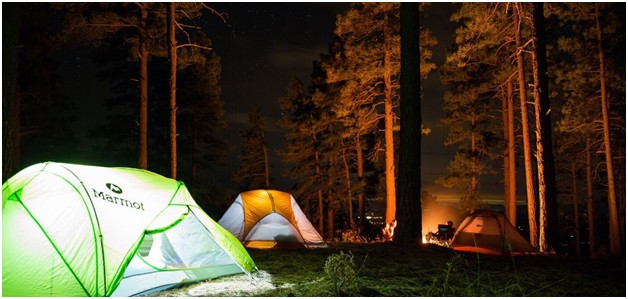
Are you an adventurer? Do you often test your survival skills? Having an emergency shelter is vital when exploring the wilderness or going hiking, as storms are likely to happen at any time, in any season. Spending the night in a make-shift shelter won’t protect you from the harsh rain, merciless wind, and below-zero temperatures.
Therefore, every adventurer is supposed to invest in a survival tent. These are available in multiple sizes, weight, storage capacities, waterproof ratings, materials, etc. Numerous review sites, like https://survivaltechie.com/best-survival-tent/, assist buyers in choosing a survival tent by reviewing the most popular models in the market.
These are the key factors to consider when shopping for such a product.
Size and weight
One of the initial considerations when buying a survival tent is the size and weight of this shelter. The size range of these products ranges from as little as a few pounds to more than ten pounds. Nevertheless, lightweight models are considered to be a better alternative because of their portability. Carrying a ten-pound emergency shelter through the woods can be exhausting, as the pack of backpackers isn’t supposed to exceed 25% of their weight.
Naturally, the number of people one plans to accommodate is vital in the choice of size. If you plan to use the survival tent on your own, a one-man model would be the right solution. In contrast, individuals who organize family adventures would need a family-size model, which is spacious enough to accommodate four people. Regarding height, taller models provide more convenience and comfort for people to walk around at the cost of being easy to observe. Keep in mind that tall shelters cannot be easily camouflaged or hidden from potential threats.
Storage
The following aspect to consider when shopping for a survival tent is the internal storage space. Most emergency shelters are divided into several areas, each of them providing a certain amount of storage. For instance, most models include an entryway where people can leave their footwear, backpacks, and gear before entering the central area. Such vestibule storage is convenient for everyone who wants to leave the muddy boots at the entrance in order to keep the shelter as clean as possible.

Moreover, survival tents are also equipped with internal pockets, scattered throughout the interior. These pockets are designed to store important items that one wishes to keep handy while sleeping. The material of the pockets usually matches the interior fabric, such as nylon. Some of the high-end models include a light pocket, which illuminates the indoor area. Read here about the properties, uses, and history of nylon.
Climate
The weather conditions are an important consideration when buying a survival tent, as disasters are likely to occur in any season. Buyers are provided with a choice of two-season, three-season, or four-season models, depending on their climate requirements. Naturally, the four-season emergency shelters provide protection against all kinds of weather conditions, including harsh rain and snow.
Nevertheless, these models are fairly heavy, thus affecting portability. Some manufacturers design lightweight four-season tents, but the price of these shelters is abnormally high. Bear in mind that no tent is capable of keeping you warm at extremely low temperatures. Therefore, make sure you invest in a foam matt to keep your body away from the freezing ground.
Waterproofness
The worst nightmare of every adventurer struggling to survive in the wilderness is getting soaked in its shelter. Hence, one is expected to pay special attention to the waterproofness of the survival tent in order to minimize the likelihood of experiencing hypothermia. In order for a model to be considered waterproof, it has to be equipped with multiple coating layers. Anyhow, these layers contribute to the thickness and weight of the tent, making it highly susceptible to ripping.
Furthermore, when shopping for the right model, focus on those with a minimum of 1000mm waterproof rating. These variants are capable of holding as much as 2000mm water in the course of storms, but a larger amount would result in leakage.
In addition, the models with two layers are touted to resist harsh rain better than one-layer survival tents. These shelters, however, are heavier and more time-consuming to set up. Also, high-end models are designed with thick floor material, which even further improves their resistance to flooding.
Condensation
Venting is yet another key factor to take into account before heading on a survival adventure. Since survival tents aren’t equipped with windows and vents, there’s no way for body heat to get outside, except through the material. Anyhow, most models are made from unbreathable materials that trap the heat inside the shelter.
Given the below-zero temperatures on the outside, condensation builds up on the top of the shelter and makes a puddle by dripping down. Consequently, you’ll get wet as if sleeping in a tent made from non-waterproof fabric. In order to prevent condensation, pick a model made from breathable material.
Single vs. double wall
The ultimate consideration is choosing between a single-wall and a double-wall model. The former is much lighter and less complicated to set up, but it fails to provide good protection against rain. Additionally, single-wall variants trap body heat and collect condensation. The latter, known as the fly wall, is heavier but prevents leakage and condensation buildup.
Final word
An emergency shelter is a must-have item in the wilderness.
Every adventurer should have one!
The post What to Consider When Buying a Survival Tent? appeared first on ThingsMenBuy.com.
from ThingsMenBuy.com https://www.thingsmenbuy.com/what-to-consider-when-buying-a-survival-tent/
via IFTTT
No comments:
Post a Comment